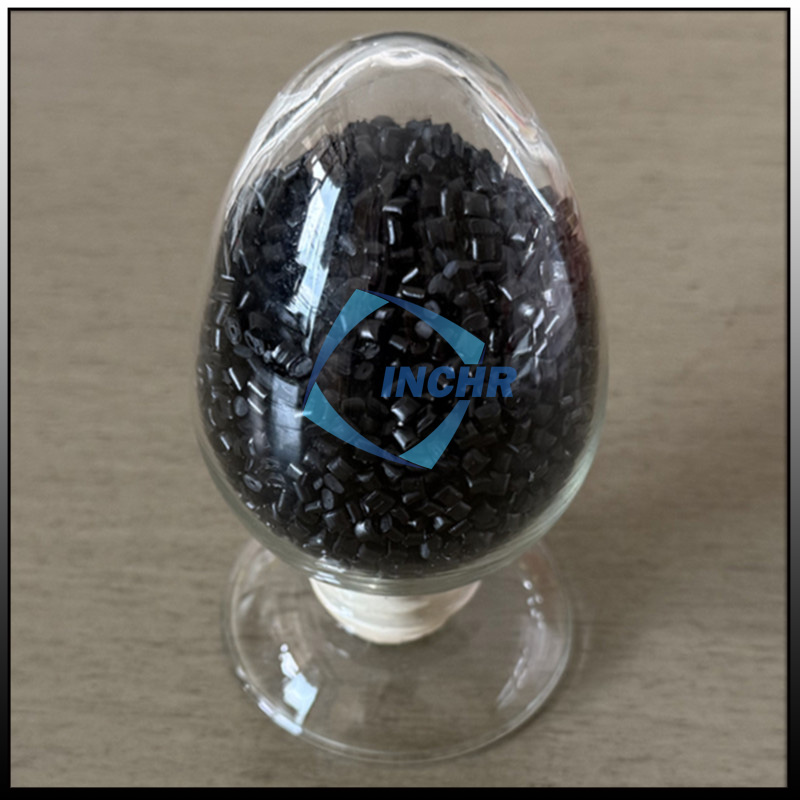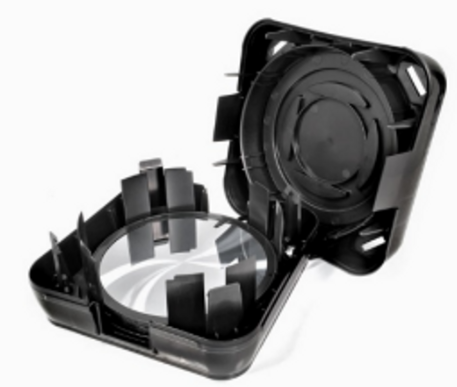INCHR@permanent antistatic masterbatch reduces the surface resistance of plastics by adding different amounts. The usage is as follows:
Preliminary preparation
- Storage condition check: Permanent antistatic masterbatch should be stored in a dry and cool place, with the temperature generally controlled at 5℃-35℃ and the humidity at 40%-60%. Check whether the masterbatch packaging is intact before use and whether there is moisture, agglomeration, etc.
- Drying treatment: It is usually necessary to dry at a temperature of 80℃-120℃ for 3-6 hours. For example, a permanent antistatic masterbatch made of polyamide is generally dried at 100℃-120℃ for 4-6 hours to ensure that the moisture content drops below 0.1%.

Dry mixing
- Determine the dosage: Determine the additional amount based on the surface resistance value of the antistatic performance of the terminal product, generally between 5%-20%. For products with high antistatic requirements such as electronic component packaging materials, the dosage may be more than 20%.
- Mixing equipment selection: Use a high-speed mixer or the mixing section of a twin-screw extruder for mixing. The speed of the high-speed mixer can be set at 800-1500 rpm, and the mixing time is 8-15 minutes; the screw speed of the twin-screw extruder is generally 100-300 rpm according to the specific equipment and material characteristics.
Processing and molding
- Injection molding: Add the mixed materials to the injection molding machine, and adjust the barrel temperature according to the basic resin and antistatic masterbatch characteristics. For example, when processing polycarbonate products, the temperature is generally 250℃-310℃, the injection pressure is 100MPa-150MPa, and the holding time is 5-15 seconds.
- Extrusion molding: Used to produce ESD sheets, ESD films, ESD pipes, etc. Add the ESD plastics to the extruder, such as the antistatic HIPS sheet, the processing temperature is generally controlled at 180-210℃. Among them, the temperature of the feeding section of the barrel can be slightly lower, at 180-190℃; the temperature of the compression section is appropriately increased to 190-210℃; the temperature of the metering section is 200-210℃. For polypropylene film, the extruder temperature can be set at 180℃-220℃, the screw speed is 30-60 rpm, and the traction speed is adjusted according to the thickness and width of the product.

- Blow molding: For the production of plastic containers, etc., add the mixed material to the blow molding machine, such as blow molding polyethylene containers, the temperature is 160℃-200℃, the blow ratio is controlled between 3-5, and the cooling time is determined according to the size and thickness of the product, generally 10-30 seconds.
Quality inspection
It is necessary to control the resistance value of ESD plastics after adding a permanent antistatic masterbatch. The standard environment for testing the surface resistance of ESD plastic products is usually determined according to relevant international standards. The following takes IEC 60079 series standards and ASTM D257 standards as examples:
- IEC 60079 series standards: In Class II explosive gas environments, the test environment temperature is required to be (23±2)℃ and the relative humidity is (50±5)% or (30±5)%. In Class III explosive dust environments, for electrical equipment with a non-metallic shell surface area exceeding 500mm², the test environment is the same as the Class II gas environment.
- ASTM D257 standard: does not specify a fixed ambient temperature and humidity value, but generally requires that the test be conducted in a relatively stable temperature and humidity environment that will not significantly interfere with the test results. It is usually recommended that the temperature be around 23°C and the humidity be in the range of 40%-60%. During the test, the electrodes need to be placed on the surface of the material and a suitable voltage is applied to measure the resistance.




